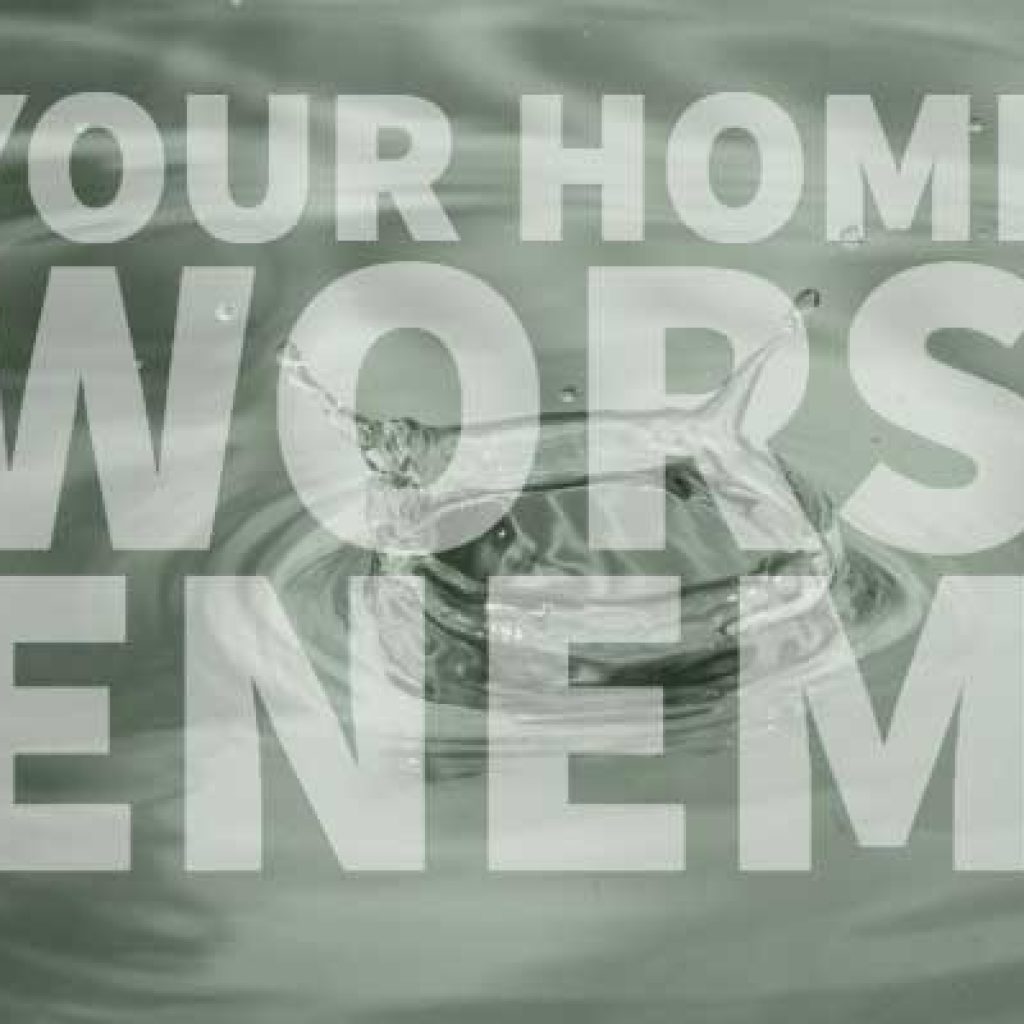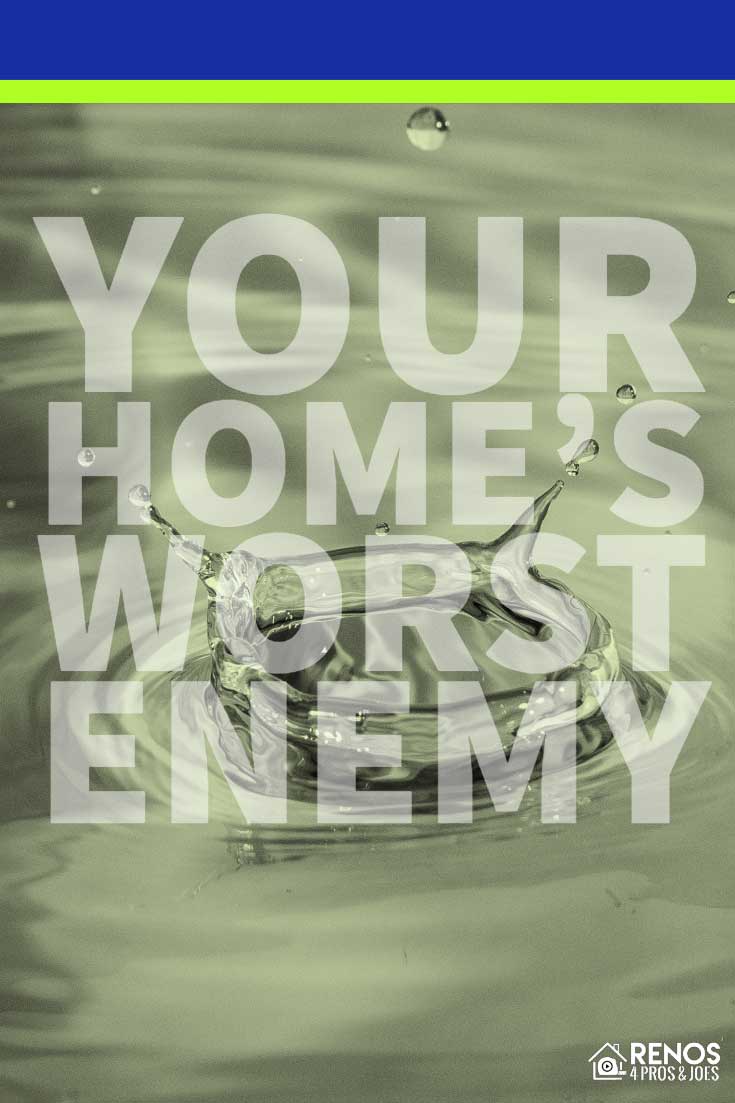Water Damage – Your Houses’ Worst Enemy
Water Series Quick Off
Whether you are a new homeowner, a longtime homeowner, or a renter, a real estate investor, a homebuyer or a real estate professional or a contractor, there is one thing that you have to understand about property – it’s worse enemy is Water. Water can be introduced to your home in many different ways and it’s important to understand how and where.
One of the reasons that water can be such a problem is that frequently it does its damage slowly over time. Consider yourself lucky if you have an isolated event, because it will typically be a scenario that cannot be ignored.
I’m going to do a multi-part series on water where I share my personal experience and some advice. I’m going to kick off this series by sharing one of my water stories. So here goes…
1st Story – Under Contract for Bank Owned Property
Last summer I was contacted by a real estate agent that was working with a homebuyer that was interested in purchasing a property that needed some repairs. I believe the property was bank-owned. In any case, they had recently submitted an offer on the property and it was accepted. The home inspector completed his inspection the same day that I met the realtor and the buyer at the property.
The scope of work necessary to meet FHA standards was relatively straight forward. There were additional items that the buyer wanted to complete depending on budget. I notated everything, we shook hands and we parted ways. Because the agent was working so closely with the buyer (first-time buyer), I submitted the estimate to both the agent and the buyer so that they could go over everything together.
The Water Emergency
We had a follow-up phone call and we exchanged a few emails to more firmly nail down the scope of work. Several days later I received a phone call from the agent in a mild panic. She explained that she and the buyer were back at the house and that the carpet in the dining room was soaking wet.
Apparently the home inspector had turned the water on inside the house during his inspection. But there was a not so small issue: The exterior hose bib on one side of the house was broken off inside the wall. So when he turned the water on at the meter, water began to flow from the broken pipe inside the wall. I guess this would explain why he observed that the water pressure on the plumbing fixtures inside the home was LOW.
Making Matters Worse
I should point out that the agent and her client were at the home several days after the water event, and that the home was completely closed up with the power off in the summertime. These are perfect conditions for microbial growth.
Resolution
She did so, and eventually she was able to speak with someone with the asset management company. They were a little slow to come out initially.
Anyway, on to what I said. I advised the agent to reach out to the asset management company that was contracted by the bank to provide necessary maintenance and ongoing inspections until the property was sold. I also advised her of what initial steps should be taken by the asset managers to minimize damage. I shared this information for her own education and so that she would know if the proper steps were being taken when she returned to the property.
Long story short, it took the asset management company multiple trips to get things back on track. The first time the asset management company came out they did not notice the problem, so they did not take any action. The agent returned and noticed this and called me again and I coached her through it. This was a multiple email and phone call type of situation.
On the second trip they knocked a crude hole in the wall (we assumed that step was taken to allow fresh air to enter the wall and expedite the dry-out. There was one small problem: the power wasn’t on and the heating and air conditioning system was not working. They were called again and the company came back out. This time the brought a few fans and pulled the carpet to exposed the carpet pad, which for all intensive purposes acts like a sponge when introduced to water.
Carpet pad (the separate layer of cushion underneath the carpet) are often a casualty of water events like this and have to be replaced. At this point we are approaching a week since the water event occured, and to add insult to injury the fans are not positioned where they moving air under the pad (where its likely the most wet).
The asset company is called out another time. They finally remove and discard the pad. It’s important to note that the water was initially confined to one room in the house, but the delayed reaction time and improper corrective steps allowed the water to spread and continue to be wicked-up(absorbed) by the carpet pad in the dining room and ended up also wetting the carpet and pad in the living room. So, the asset company did take out the pad for both rooms, and then in one additional trip (which was prompted by a phone call of course) they removed the still damp carpet.
Conclusion.
Now, put yourself in the buyer’s shoes or in the agents shoes. You are under contract to purchase a property that was essentially being sold as is. And due to no fault of your own, you now must spend more of your renovation budget to replace carpet that was in usable condition when you began your due diligence period. And I know many of you are likely saying that they should go back to the bank and request a reduction in price. And you are right, BUT that doesn’t mean that the bank will agree to it. And if you are in a competitive housing market (WHICH WE ARE), the bank may be even less open to further negotiations. So if the bank is not willing to budge on price what would you do? This buyer decided to move forward. I can’t remember if the bank gave any concessions for the carpet. If they, did it was a nominal amount.
The point of the story is that had the proper steps been taken in a timely manner much of the damage could have likely been avoided, and certainly many of the headaches from having to make the numerous follow-up emails and phone calls.
Water damage does not always take the form of an event that is readily observable to the eye. And additionally, people often underestimate how long it can take for a substantial amount of water to evaporate.


